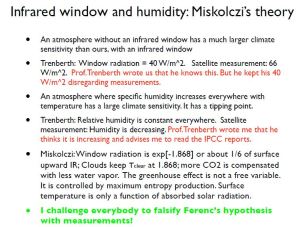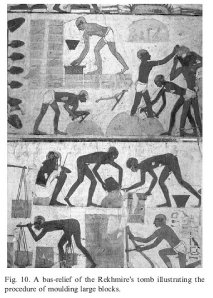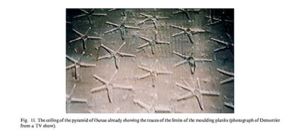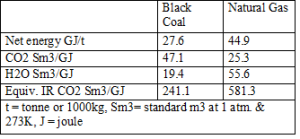At the excellent web site of Jo Nova there was a discussion about fossils fuels
Below I have some posts after which I have added my comments about coal.
Very few understand about the qualities of coal. Even most marketers and user of coal have little understanding because they have no geological qualifications or engineering knowledge about physical properties.
On another post I will talk about natural gas which is abiotic and not a fossil fuel.
Kalm Keith
January 11, 2024 at 5:47 am · Reply
Obviously this is an interesting topic but is there coal on Saturn’s moon as well.
Or is coal , as often described, still a fossil fuel?
- #
David Maddison
January 11, 2024 at 5:53 am · Reply
Coal is definitely a fossil fuel and frequently contains excellent quality fossils.
- #
ianl
January 11, 2024 at 6:53 am · Reply
NO, it is not.
It is comprised of various plant remains and it’s cellular structure is obvious in thin section under a microscope – but these remains are not fossilised, unlike tree segments (petrified wood) where the internal cellular contents have been replaced by (say) silica while preserving the outer structure, so forming actual silicate rock.
As for the canard about coals containing “excellent” fossils … so do black shales, and quartzose sandstone, and fissile mudstones/slates, and … We call them sedimentary rocks.
- #
David Maddison
January 11, 2024 at 7:19 am · Reply
Definition of fossil:
https://www.britannica.com/science/fossil
Fossil, remnant, impression, or trace of an animal or plant of a past geologic age that has been preserved in Earth’s crust.
The original organic remains do not have to replaced by silicates to qualify as a fossil according to that definition.
Petrifcation seems not to be required and recognisable organic remains in coal are generally referred to as “fossils”.
As for the canard about coals containing “excellent” fossils … so do black shales, and quartzose sandstone, and fissile mudstones/slates, and … We call them sedimentary rocks.
Coal too, is a sedimentary rock. And who said excellent fossils can’t be found elsewhere?
https://www.ga.gov.au/scientific-topics/energy/province-sedimentary-basin-geology/coal-geology
Coal is a combustible sedimentary rock formed from ancient vegetation which has been consolidated between other rock strata and transformed by the combined effects of microbial action, pressure and heat over a considerable time period.
January 11, 2024 at 6:22 pm · Reply
Not so sure about that description of coal. I have personally seen tree roots in peat bogs, I have personally seen tree roots and partly carbonised stumps in brown coal deposits, I seen carbonised tree roots in sub-bituminous coal at Leigh Creek SA and Collie in WA. I have been underground in Fingal Tasmania where I saw a whole carbonised tree in the roof of the entrance drive (note the Fingal deposit is overlaid by granite and can not readily be drilled from the surface).
Just a quick note of classification and age of coal.
Coal starts in bogs in wet areas (tropics, sub-tropical rain forest, and rain forest like the west of Tasmania. I have seen a peat bog in the NSW central highlands near Bowral. Large young peat deposits with 90% air dried moisture are used in Ireland for power generation. Brown coal which are young deposits and have 66% air dried (AD) moisture are used in the Loy Yang power stations. Slightly older Brown coal with 50% AD was used at Angelsea Vic by Alcoa. Lignite which is used in Germany and Poland is older again and has 30-40% AD moisture. The Leigh Creek and Collie coals are sub-bituminous coals with about 25% AD moisture. Indonesian coals and Blair Athol in Qld have 10-15% AD and are low rank bituminous coal (no fossils in these) The coals in the Southern District of Qld (eg Acland & in the past Ipswich) with 5-8% AD moisture are high volatile low rank bituminous coal (ie thermal coals). Lithgow and Newcastle coals have AD moisture 2-5% are older again high volatile bituminous coals can be used as semi-coking if low ash and make excellent thermal coals. Higher ranking medium volatile bituminous coals have AD Moisture of 1.0-2.0% and are the bottom seams of the Sydney coal basin such as the Bulli and Wongawilli seams at Wollongong and the Central districts in Qld (eg Blackwater). Athracite coal has noramally been affected by volcanic intrusion to heat the coal and drive off the volatiles. AD moisture is about 0.5%. There was some around Mt Alexandra near Berrima NSW. Vietnam has lots of anthracite.









